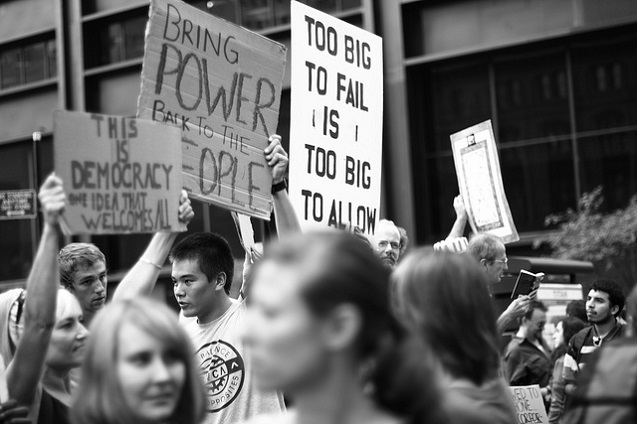
Dark Affinities Liberal Neoliberal
Each society determines which thoughts and feelings shall be permitted to arrive at the level of awareness and which have to remain unconscious. Just as there is a social character, there is also a “social unconscious.”
– Eric Fromm
Published on http://truth-out.org
Newly elected Mayor Bill de Blasio’s “tale of two cities,” referring to the wealth divide in New York, sounds nicely Dickensian, but the “boots on the ground” reality is not divided so clearly. Roughly speaking, the bottom 40 percent of Americans are what Dickens’ Noddy Boffin called “scrunched” while a top 20 percent, if we follow the counsel here of “Scrunch or be scrunched,” are doing the scrunching. A middle 40 percent, are, as Gradgrind facts show, decidedly more of the scrunched class than the scrunching class, although their confusions, misrecognitions and dreams of former well-being render them as liable to identify with the scrunchers as with their fellow scrunched.
So, we have some 80 percent of the American population in need of legislative action that 20 percent of the population either does not require or requires precisely the opposite. The numbers are on the side of Have Less Each Day and Have Nothing at All and not on the side of the Have Mores. However, the top 20 percent are holding positions of power, while the 80 percent are fractured, disillusioned, disinterested, confused and pliable. So our expectations of victory by overwhelming numbers fade.
The situation is yet darker and more complex as to why we cannot right an upside-down ship of state. I want to introduce what I call a “melding” on the level of the American social unconscious of Left and Right that also must be considered when we wonder why our democracy has turned to plutocracy, why that fact is not recognized and why the Many cannot put a stop to an aggrandizement of the Few at the expense of the Many. Only when we delve into affinities between Liberal and Neoliberal on this level of social unconscious can we comprehend the puzzling, inexplicable American politics since Reagan.
Legislatively, we are close to a flat tax or a “fair” tax, the former a tax where $50,000 is taxed at the same rate as $400,000, and the latter a sales tax replacing any income tax. We are closer to undermining entitlements than bolstering them. We are closer to eliminating unemployment compensation and the Earned Income Tax credit than to holding on to them. Obviously rational attempts to constrain the Wild West free play of the American financial sector such as the the Dodd–Frank Wall Street Reform and Consumer Protection Act including the Volcker Rule section of that act somehow get entwined in American paranoia regarding governmental forces taking away “personal freedom.” Clear scientific evidence that humans are disastrously mucking up the environment do not produce real anxieties and appropriate defensive action, but rather are waylaid by dark anxieties regarding the effect the national debt will have on future generations. Although the Affordable Care Act aids some of those on the majority side, the majority of the country takes the stand of the minority.
Most obviously and outrageously of all is the fact that it seems as though the 80 percent who live humbly, poorly, confusedly, increasingly anxiety-ridden in the shadow of 20 percent are not plaintiffs at all, but The Accused. If this were a criminal trial and the courts proceeded to rule the plaintiff as the accused and the accused as the plaintiff, that legal system would be overthrown. In the 2012 presidential primary, Mitt Romney voiced a case against 47 percent of the American population, demonstrating this Mad Hatter convulsion of sanity and order.
It seems crystal clear that the overwhelming majority of the American population needs a reliable representation in Congress, one they do not presently have. If they did, they would not be in a state of continuing collapse, the rush of democracy toward plutocracy would have stopped just after the S&L crisis, when deregulation proved disastrous and we would not now be living in a country in which the top one-hundredth of 1 percent make an average of $27 million per household per annum while the average income for the bottom 90 percent is about $30,000.
It is not surprising that a plutocracy in sway in a country that was at one time a middle-class democracy has the money and power to convince all that a plutocracy does not exist. What is surprising is that an irrational notion that wealth in a few hands is not a problem to the aspirations of an egalitarian democracy continues to hold sway. Nonsense and absurdity appear now as sweetness and light.
If we delve into a social unconscious in which such a topsy-turvy event can occur, we find whole scenarios invisible to rational discourse. Dark affinities appear where we discover that The Accused lean heavily into the accusations made by the 20 percent. They share a great deal within deep recesses of the American cultural imaginary, or the American mass social psyche. On this level, there are no opposing ideologies or parties, but rather a conjoining of subliminal responses that create an almost identical imaginary of the world and who lives in it and how they live in it. We need to explore these deep-rooted connections, sever them, and seek legislative representation that is not bound already on this level of unconscious affinities to the policies we need to contest.
Ironically, while Americans seek to change the “minds and hearts” of Islamists, the hearts and minds of Americans victimized by the chance-like dispensations of casino capitalism remain attached to what is victimizing them. The rest of the world more readily apprehends this state of affairs than do Americans, thus explaining why we do not shine elsewhere as we do in our own eyes. Foreign judgment, however, does not make it easier for Americans to self-scrutinize – not simply because “American exceptionalism” pre-empts listening to foreigners but because the sort of pathography I am conducting here finds the Winners and the Losers sharing the same values. They share the same mass psyche desires, fears, antipathies, repressions, traumas, blindness, compulsions, dreams and nightmares, the same American Dream, if you will. If the Losers did not connect here with the Winners, we would face the clarity of a moral dualism, of innocence and guilt, of oppressor and oppressed, of hero and monster, of, most aptly, the dangers to democracy of a severe wealth divide and the nurturing of democracies that aspire to egalitarianism.
There is no such clear opposition within the cultural unconscious.
If the complex incestuous state of affairs on the American mass psyche level could be reduced to the good guy/bad guy polarities of the wars we fight – Nazis, Communists, Terrorists – the disastrous US wealth divide surely would become a class war with a dangerous outcome. But because almost every American, whether employed or bankrupt, solvent or insolvent, luxuriating or underwater, wants it all, admires and envies those who have it all, hates those who interfere in any way with the chance to get it all, believes that rich and poor alike are free, independent, proud and playing always on a level field, that a man down on his luck today can be king of the hill with the right turn of the wheel and that carping criticism comes from whining anti-Americans who want nothing more than have us all equally poor and queuing up for government handouts, there is no moral divide, but only a moral monism.
When minds and hearts are bound together in deep subliminal recesses, quarrels are a sham, a cover behavior meant to defend a civilized, rational high ground from a low untamed place that is neither civilized nor rational. We fear going into such recesses because we find there what darkens our “American exceptionalism.” We find there hostilities and avaricious hungers that mock our Jesus evangelism.
That there is no real fight on this mass cultural unconscious level is paralleled by the so-called fight between the political parties. There is no two-party system on the level of the American social unconscious; no one is across the aisle, but everyone is actually seated where you are. Partisan conflict and polarization that we witness in Congress would belie my claim of subliminal affinities if the divide were somehow equal. It is not; there is no reason why the 80 percent of the population whose well-being has decreased since Reagan has not legislatively overpowered a dividend-fed 20 percent. There is no reason on a conscious, rational level explaining gridlock. What has been going on in American politics can be compared to a rewriting of the War Between the States in which Union forces lost although they were four times the size of the Confederate forces.
Wealthy conservatives are like wealthy liberals in that they relish the wealthy life-worlds within which they live; poor conservatives are like poor liberals in that they both believe it is up to them to build a wealthy life-world for themselves. The common core here is buried very deep and traverses matters over which legislative action is gridlocked, matters such as education, immigration, “moral hazard,” “class warfare,” gentrification, tax warfare, entitlements, global warming, stimulus and austerity, national debt, regulation, indictment and prosecution of the financial sector, the Eternal War on Terror, Gitmo and torture.
The new Common Core education proposal is one that Liberals and Conservatives commonly share because they both accept that capitalist growth requires what David Brooks calls a “mechanistic intelligence” and that the young should be schooled in that sort of intelligence. Neither party sees education as giving the young an opportunity for liberating themselves from this mission to “grow the economy” under the direction of Market Rule. Both parties agree that this Common Core best serves the needs of corporate human resources, ignoring how obsolete high-tech training becomes in our high-tech world.
At the level of mass cultural imaginary, both parties find it reasonable to pursue the math and science that will produce the technology that will in turn produce the patents that will lead to profit for those already positioned to receive those profits. Here the powerful code that captures the psyche of both Liberal and Neoliberal is dominating size and power, the root mantra that profits always need to be bigger. Exercising the imagination is not only profitless, but always, for any hegemonic state, a possible threat. Imagination is reduced to “innovation,” which is bounded by apps, robotics and everything cyber-tech.
Illegal aliens are a cheap labor supply for home and business, the Liberal wealthy as needful of nannies, cooks and gardeners as the Conservative wealthy. Here both factions adhere on the psychic grass-roots level to an image of hardworking help who have a Third World sense of class privilege and the respect that it is owed, something that American workers fail to display at this level. This desire to dominate is in need of the dominated, a truly dark need to be hidden from the grounding text of American democracy.
Very few of the top 20 percent, regardless of whether they are blue or red, find a progressive income tax fair. The idea that some people, especially those who have done well, should pay a higher tax than others, those who have not done well, is counter-intuitive to the American sense of equality and fair play. On this level, any sort of unequal treatment is patently un-American, and Americans are slowly working toward equality in all domains. However, on the social unconscious level we are observing, inequality seems to be the force at work, call it the subliminal disposition. It explains why it took so long for a love of equality and fair play to show up in regard to black African slavery or the treatment of the native population or women’s rights. Much below all historical analysis lies the magnetic psychic attractiveness of White, Male, Anglo-Saxon and Protestant. Darker and deeper lies an imaginary mapping of duality that Liberal and Neoliberal share, of the firmer and more certain presence of good when opposed with a clearly defined evil, of the superiority of white shown in the degradation of color. A perverse paradox results when a nation conceived in equality is yet on an unsayable level searching for its exceptional superiority, for a standing above equality.
In regard to “moral hazard,” Liberals are at best undecided whether giving a man a fish will destroy his incentive to start fishing and selling fish for profit or whether “moral hazard” is what Wall Street and hedge fund managers face in their everyday pursuit of high returns. This Liberal irresoluteness, however, is itself a sham. There is no energy forthcoming to point out the absurdity of tying moral degradation to welfare and entitlements. It seems that Liberals will allow the notion that the poor are corrupted and corruptive in society while power, especially plutocratic power, is beneficial. Consider that key beliefs regarding freedom of choice, personal responsibility, and the play of Chance are not critically scrutinized by Liberals, although public instruction here would do much to deconstruct the Conservative bible on these matters.
The hot spot that connects Liberal and Neoliberal in the American mass social unconscious is the magnetic attractiveness of individual freedom and will that has abided since frontier days. A fierce independence crosses party lines and unites all in a suspicion of and antipathy to collective action and aid. We observe then that the party of a bare minimum of governmental intervention, the Liberals, is as magnetically attached to non-intervention of Market Rules as are the Neoliberals. And both factions are proud that Chance is no more than what Americans have a gift for overcoming. And so it enters a mythos of powerful national memory.
A huge wealth divide in the United States in which the top 10 percent of US earners claimed about half of all before-tax income in 2012, including capital gains, is not an issue either party will campaign on for obvious reasons: The wealthy 20 percent of Americans are not themselves positioned to perceive any problem with income and wealth inequality. They literally do not see it in the same way a man living in Grosse Pointe does not see the poverty of Detroit. They do not swim in the same waters. Personal economic well-being gives no man an incentive to see the wealth divide as a problem nor imagine that a class war is really going on, one that Ralph Nader called a tug of war in which only one side is pulling.
Once again, however, this disinterest in the class divide is shared by the bottom 80 percent, whose own well-being might best be served by a political party that saw the divide as a devastating problem, one that legislation could do much to amend. Unfortunately, the legislators of our two-party system are of the wealth party and share deep affinities. But the Many remain magnetized by the prospect of “having it all” and are thus unable to recognize or enter a class war that may turn against them when they too “have it all.”
An extended period of middle-class prosperity, increasingly eroded since Reagan, still nurtures a sense of an American equality unlike the entrenched class divides, economic and social, of Europe, although statistics show that only Chile, Mexico and Turkey have greater inequality than the US. This feeling that “we are not like them” is buried deep in the American cultural imaginary; only socialists and envious Losers talk of “class warfare.” Aristocracy and peasantry are always elsewhere in the US psyche; Horatio Alger is the unconquerable American who always climbs the ladder, and hardship is always ended by social and economic mobility, which is also not factually verifiable. Thus, the class divide, no matter how ancien regime it becomes, is a topic willingly repressed by both parties.
Gentrification – the taking over of poor neighborhoods by the wealth class and high-ending all real estate, products and services to meet the expanse of the gentry class’s pocketbooks – occurs when a native but poor population is in possession of what a minority but wealthy population desires. Where do the poor go when pushed out of their neighborhoods? No one knows, and neither party seems to care. Gentrification is not an issue that troubles the gentry, or troubles them only as to how to move out a rent-controlled class. And the gentry are to be found on both sides of the so-called political divide.
Tax reform strikes a welcome note at any time in the American mass cultural psyche because it signifies an enforced compulsory sense of society, of mutual interdependence, that is contrary to what reigns supreme on this level, i.e., the independent free-spiritedness of the individual. “Reform” thus is a reform of a progressive tax system that benefits the 80 percent. Lying close by is the repugnance with which this independent spirit holds the government that imposes socialist social concern through taxation. Americans see themselves as altruistic, charitable, compassionate, generous and so on – but all by personal choice and not societal compact. The tax reform that is sought on this fantasy level is one in which each individual decides what taxes he or she is to pay and where that money is to go. Because you can have neither a government nor a society that can function in this manner, “tax reform” has the mesmerizing power that “Rosebud” has in Citizen Kane.
Global warming is like ill fortune that is no more than an opportunity to show your mettle, a challenge to be met. But deeper is the cross-party affinity, once again, of domination – this time of nature. Technology does not adapt to the vagaries of nature, but rather overwrites them and thus strengthens humankind’s hold on the planet and the superiority of the species.
Stimulus is an extended government handout that goes far beyond the extent of welfare handout and thus violates the cross-boundary attachment to unaided independence.
Austerity to dissolve the national debt obliges the ingrained Puritan spirit of the American soul. Paradoxically – and paradox is no problem in the social unconscious – stoic and epicurean “elective affinities” flourish in the American social unconscious. Ironically, however, Puritan austerity and discipline are required of the Many while the Few oversee the penitence.
Regulation, indictment and prosecution of the financial sector are understandably not pursuits of those who are deeply invested, but, to repeat, the wage earner tags along here because the red cape of Big Brother tyranny is waved.
The Eternal War on Terror, Gitmo and torture are like the ego’s defense mechanisms: They are there to protect a resident order of things. And here the wealthy on both sides of the aisle represent that asymmetrical order while those imprisoned in impoverished lives absorb this fear and anxiety because it’s what they do; fear and anxiety being for them a way of life.
The Clintonian Third Way in politics that President Obama has moved toward after abandoning his “post-ideology” naiveté brings subliminal connections between Liberal and Neoliberal views into the light of day and does so boldly. Leaning into a Market Rule that has colonized areas in which it does not belong is an incomprehensible tactic unless one acknowledges already existing dark affinities between Liberal and Neoliberal views. In its present overextended and overweening form, Market Rule is like the unruly child who is not corrected by adapting his behavior.
What signifies in all these strange perversions of rational expectations is the enormous potency of subliminal desires, fears, anxieties shared by all Americans to camouflage the strangeness and the perversity while at the same time detouring any rational remedies. If we could free ourselves, in a sort of mass therapy of the American social unconscious, from our cross-party, mutual fixations, desires, antipathies and fears, we would see clearly that an economic system similar to the game of Monopoly has knocked out eight of the ten players and has left two with all the money and all the property.
Because Liberals are linked in more ways than I have indicated to the Neoliberal social unconscious, Liberals can do no more than make a poor, stumbling defense of the majority of Americans, can make no decisive indictment of crimes and criminals – but allow the modicum of any purpose to dwindle and meander into mindboggling confusion. Too many Americans are infected and are thus so confounded on this conscious level while disastrously tied on a yet unreachable level, and yet barely enunciated level, to the perpetrators and causes of their immiseration.


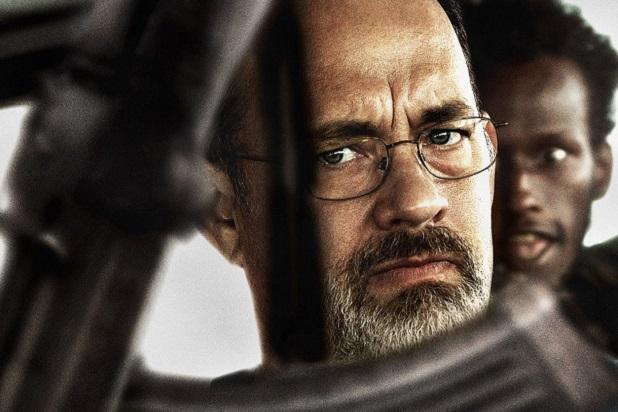
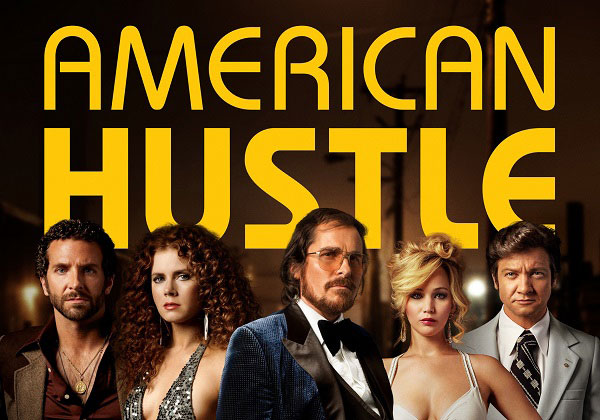


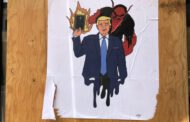
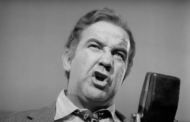







One Comment
ELI
It is truly a nice and helpful piece of info. I am happy that you shared this helpful info with us. Please stay us informed like this. Thanks for sharing.
ELI http://www.net-ict.be/